
Contributed by Michael Goldberg, the Baha’i Community
In 1945, delegates from all over the world met in San Francisco to establish the United Nations. On May 19, they traveled to Muir Woods to honor the memory of President Franklin Delano Roosevelt.
President Roosevelt believed in the value of national parks as sources of inspiration and human renewal. He also believed that good forestry practices and sustainable development of natural resources were keystones to lasting peace around the world.
Organizers of the event hoped that the profound beauty and serenity of Muir Woods would inspire the delegates to pursue the president’s program for world peace.
Dag Hammarskjold, Secretary-General of the United Nations upon visiting Muir Woods in 1955 said, “Persons who love nature find a common basis for understanding people of other countries, since the love of nature is universal among men of all nations”.
We live in a polarized society with news and social media playing on our lower nature, causing feelings of anger and divisiveness. This is not healthy for our physical and spiritual well-being. If you turn your attention to the things that unite us, you will find yourself more tranquil and calm.
Connecting with nature can bring countless benefits. It can inspire questions about our purpose, our earthly existence. We experience awe and wonder at the beauty, magnificence and complexity of creation. Being in nature or even viewing scenes of nature reduces anger, fear, and stress and increases pleasant feelings. It gives you a sense of connection to something bigger than yourself. Countless studies have shown that nature has many therapeutic benefits for the mind, body, and spirit. Nature can make people feel more energized and less stressed while also increasing levels of happiness.
Communing with nature is not very complicated. You only have to go outdoors and attune yourself to the abundant life already there waiting for you. Treat yourself to happiness. You deserve it.
This blog post is the expressed opinion of its writer and does not necessarily reflect the views of Tysons Interfaith or its members.

Contributed by Stephen Wickman, St. Thomas Episcopal
Members of St. Thomas Episcopal (a founding congregation of Tysons Interfaith) have created a vegetable garden. We are delighted that our garden is starting to yield fresh produce that we are delivering to SHARE of McLean, which is housed at another Tysons Interfaith congregation, McLean Baptist Church.
Our earlier labors of tilling, erecting a fence, purchasing and planting the vegetables, and the on-going weeding and watering are yielding green peppers, squash and cucumber blossoms, little green tomatoes and green beans that have sprouted from seed. We also have eggplants, okra, sweet potatoes and more. Marigolds add cheerful color and act as a natural insecticide.
One of our volunteers had this to say:
“The picture below is a picture of what the Bible calls “first fruits” (e.g. Leviticus 23:10). The Hebrew word translated, “first fruits” is bikkurim which literally means “a promise to come.” Our four peppers are small in number but a beautiful promise of what is to come. I took our first fruits to SHARE. The woman who received them said, ‘They’re beautiful!’ She was thrilled. Ah, the first fruits are creating the fruit of the Spirit: love, joy, and wellbeing.”

We are grateful for SHARE and for St. Thomas’s garden volunteers whose labors of compassion are benefiting our brothers and sisters who are in need of food.
To see a recent post about the garden on Facebook, please visit: https://www.facebook.com
This blog post is the expressed opinion of its writer and does not necessarily reflect the views of Tysons Interfaith or its members.
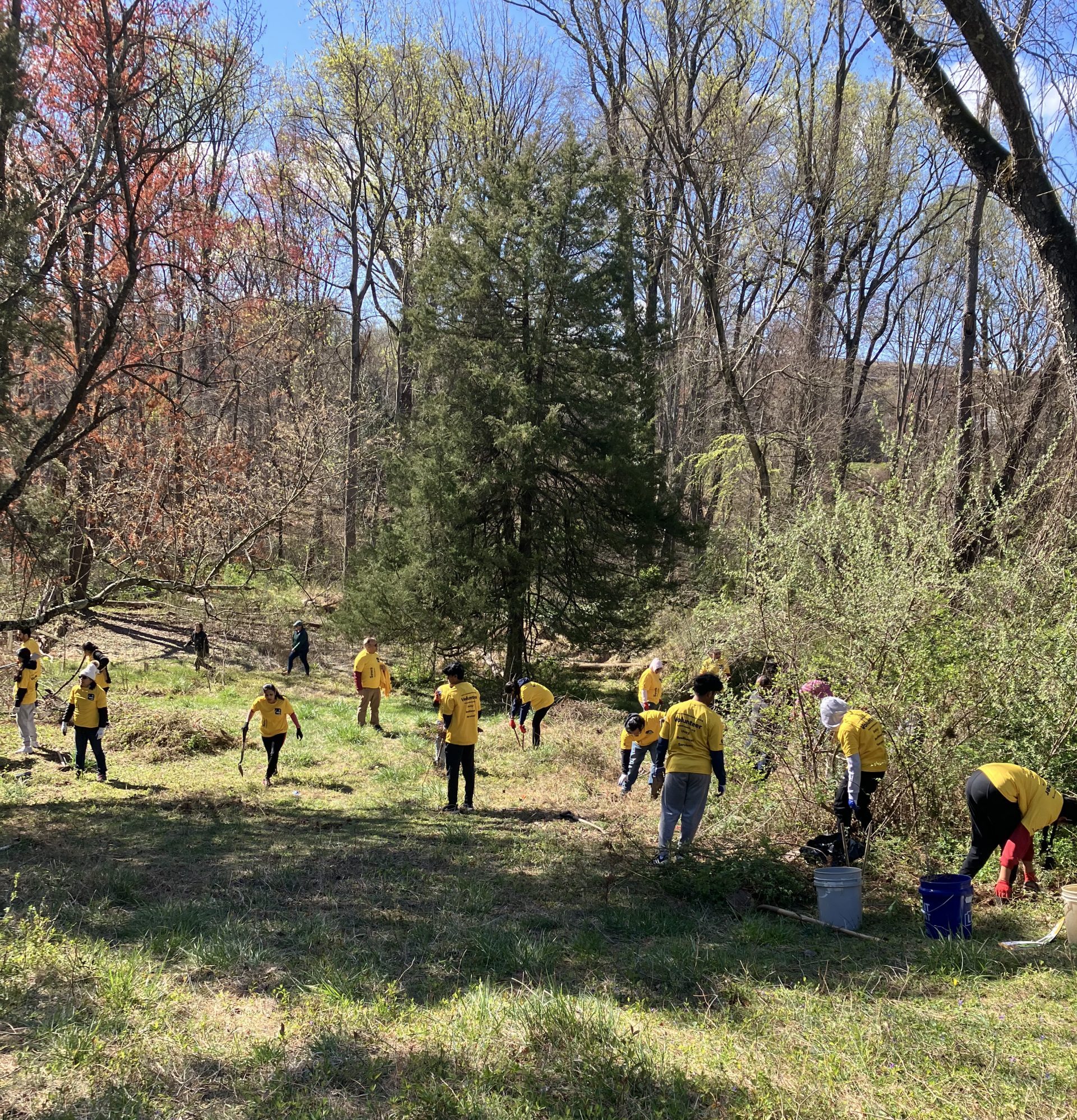
Contributed by: Dr Trish Hall, Center for Spiritual Living, Metro
Photo: SEWA International Volunteers Working in McLean Hamlet Park on April 6
Isn’t “inextricability” (incapable of being disentangled), a great word? Simply, we cannot get away from one another. The effects any of us have on the environment – on everyone and everything – affect us all directly and indirectly. What we do turns back on all of us. In the Judeo-Christian Bible, Cane asks, Am I my brother’s keeper? The answer is “Yes!” We are our brothers’ keepers and our sisters’ and mothers’ and fathers’ keepers. Everything each of us does impacts everyone, just some more than others.
The solution I am proposing is simple yet I do not claim it will be easy, although it could be. Since we are inextricably entangled in everyone else, the solution is a massive shift of consciousness. A shift at the systemic level that declares in words and more importantly in actions, that we care. We care about the environment. We care about one another. We care about the world we are leaving to our offspring. Simply, WE CARE! Some who declare that this approach is not simple, may even claim it is impossible. Believing that all things are possible, I don’t accept that perspective. I am confident that it not only is possible, it is sustainable! And attainment of sustainability requires the commitment and follow through of each person who cares!
There are millions of people and myriad programs that are doing great work and so long as their commitment and energy hold out, they are sustainable. Fortunately, new recruits come along that are dedicated and step in when those in the trenches fatigue. They are valiant, amazing people. I laud them and applaud them. So long as the supply of new people does not wane, those programs will continue.
Some, perhaps many, avowed environmentalists spend more energy focused on what other people are doing or not doing that damages the planet, than on doing something about the environment. Because of the crises cropping up on so many different fronts, this is critical work. Again, it is only sustainable so long as new crops of dedicated people continue to show up. Truly, we all need to take a stand against the violators, big and small.
I am inviting people to address the crisis at the systemic level. We need to dig deep and address the consciousness that is not only allowing the contamination of our environment, it is fostering and nurturing it. We live in a “throw away society,” that condones a disposable mentality. The ordinary, day-to-day insults to our environment result from a consciousness that stopped washing dishes. Instead, whether plastic or paper, throw it away and someone (bless the disposal facility personnel) will clean up after the general malaise and laziness. Alas, there are millions of people who simply drop their trash wherever they are. A few rationalize that what they are dropping in the streets and parks is biodegradable. Some don’t care at all. They apparently assume that the clean-up fairy will come along behind them and fix it. Some don’t even care whether it is cleaned up.
The big violators must be called out! We know we must be a clear stand for stopping the harm they are perpetrating yet feel that stopping those entities is so huge that all our feelings of inadequacy arise. Rather than remaining in a state of paralysis, I choose to turn to what I/we can do. By releasing the sense of overwhelm on the huge scale, we have more energy to devote to what we can do … and there is always something that each one of us can do to change the world and help heal the planet.
We can conserve energy by stopping finger pointing and blaming on the local level, join with others and pick up after the thought-less members of society before we drown in others’ waste. Tysons Interfaith and many other organizations do park and highway cleanups applying critically needed Band-Aids that are not ongoing remedies. They are short term and again, so long as new volunteers show up to replace burned out ones we can maintain. But maintaining is not sustaining.
A shift of consciousness is required for us to switch to a truly sustainable solution. There are valiant souls who are already taking this approach, and there are those who complain but do not act. To be sustainable, it is critical for us to embrace a “both/and” approach. There are those who educate about the fragility of our environment. Often, they and their students are the ones picking up after the contaminators. It requires a shift in consciousness from “why should I pick up after someone else,” to “it pleases me to have a pleasant environment, so I’ll pick it up.” It calls us to commit to events like river and park clean ups and even closer to home … perhaps the trash in front of the neighbor’s house.
This is where “inextricability” comes in. We cannot be separated from one another … our beings cannot be disentangled.
The indigenous peoples around the world have always known and taught their offspring that we are inseparable from our environment and from one another. Traditionally, they honor Oneness … they honor Mother Earth and all of her inhabitants. We are our brothers’, sisters’, mothers’, fathers’ and strangers’ keepers.
Whether we like it or not, we are responsible for one another. Let’s remind ourselves that we are all spiritual beings. Brene Brown defines spirituality as, “…recognizing and celebrating that we are all inextricably connected to each other by a power greater than all of us, and that our connection to that power and to one another is grounded in love and compassion. Practicing spirituality brings a sense of perspective, meaning, and purpose to our lives.”
When we immerse ourselves in the awareness of Oneness taking care of our planet and its inhabitants is no longer a burdensome responsibility. It becomes a celebration of interconnectedness and an opportunity to uplift the awareness of others. It is our opportunity until others learn and embrace their responsibility. The big question then becomes, “how are we to shift the consciousness of the world?” When I phrase it that way, it does feel immense and overwhelming. Let’s “chunk it down to bite size pieces.”
As Jana Stanfield declares in her song, “All the Good” … “I cannot do all the good the world needs, but the world needs all the good I can do.” We each must ask ourselves, “what small thing can I do?” and then do it consistently so that it grows. One of the easiest things is to embrace the concept of being an “exemplar” – a person serving as a typical example or excellent model. People learn by observation. When we are each an observable example of how we value and care for Mother Nature we are teaching others how they, too, can change the world for the better. Whether they like it or not, we have then influenced that behavior and their choices. They are different simply by being exposed to us. The ultimate result is a shift of their consciousness.
So ask yourself, “If not me, who? If not now, when? Embrace Margaret Mead’s admonition: “Never doubt that a small group of thoughtful, committed citizens can change the world; indeed, it’s the only thing that ever has.”
Let’s change the world starting right now!
This blog post is the expressed opinion of its writers and does not necessarily reflect the views of Tysons Interfaith or its members.
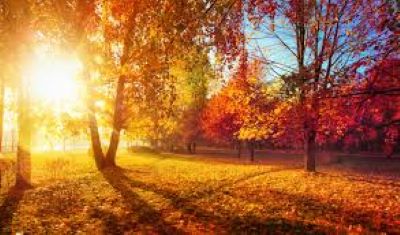
With the hustle and bustle of our work lives, our family lives, the holiday seasons, it is all too easy to drop into what some call survival mode … the put one foot in front of the other mode. We rely on habits and demands placed on us by others to move us through each day. Some of us turn down our sensory responses to avoid succumbing to overwhelm. The downside of this numbing is that we simultaneously turn down, maybe even turn off, our capacity to enjoy Life.
I invite you to take a radically different approach that avoids catastrophizing and averts all sense of overwhelm stemming from the many demands that life may be placing on you: TURN UP your sensory responses! By heightening your sensory awareness, you can engage consciously in the “Simple Practice of Noticing” … notice everything! Notice the different shades of green in the trees and bushes. Notice other colors. Notice eyes and eye colors. Notice faces – old faces, young faces, thin faces, and plump ones. Tune into bird calls – when you pay attention, they are there amid city noises. Hear the breezes. Notice the sense of freedom when you deliberately pay attention to what is rich and full in your environment … it is the Creator – God expressing as everything. Soon you will discover an easing of tension in your body that you have unknowingly taken on. With this easing, you will find that you are able to see the Sacred in and as everything.
The practice is truly simple:
- Stop everything – even it is just for a nanosecond.
- Be still for just a moment (or maybe longer because it feels so good).
- Remember ALL creation is the expression of The Creator.
- Tune up your sense of observation and let your curiosity surge.
- Challenge yourself to see the Sacred as whatever you are seeing: humans, other animals, all aspects of the natural world, human creations – art, music, buildings … everything!
- Practice … like with any new habit, you want to consciously reinforce it.
- In a very short time, you will notice that the only sense of overwhelm you are experiencing is awe and wonder! How could this much sacredness have gone unnoticed?
- Develop the habit of noticing the sacred as everything! A deep, rich sense of joy arises and your life is transformed.
This blog post is the expressed opinion of its writer and does not necessarily reflect the views of Tysons Interfaith or its members.
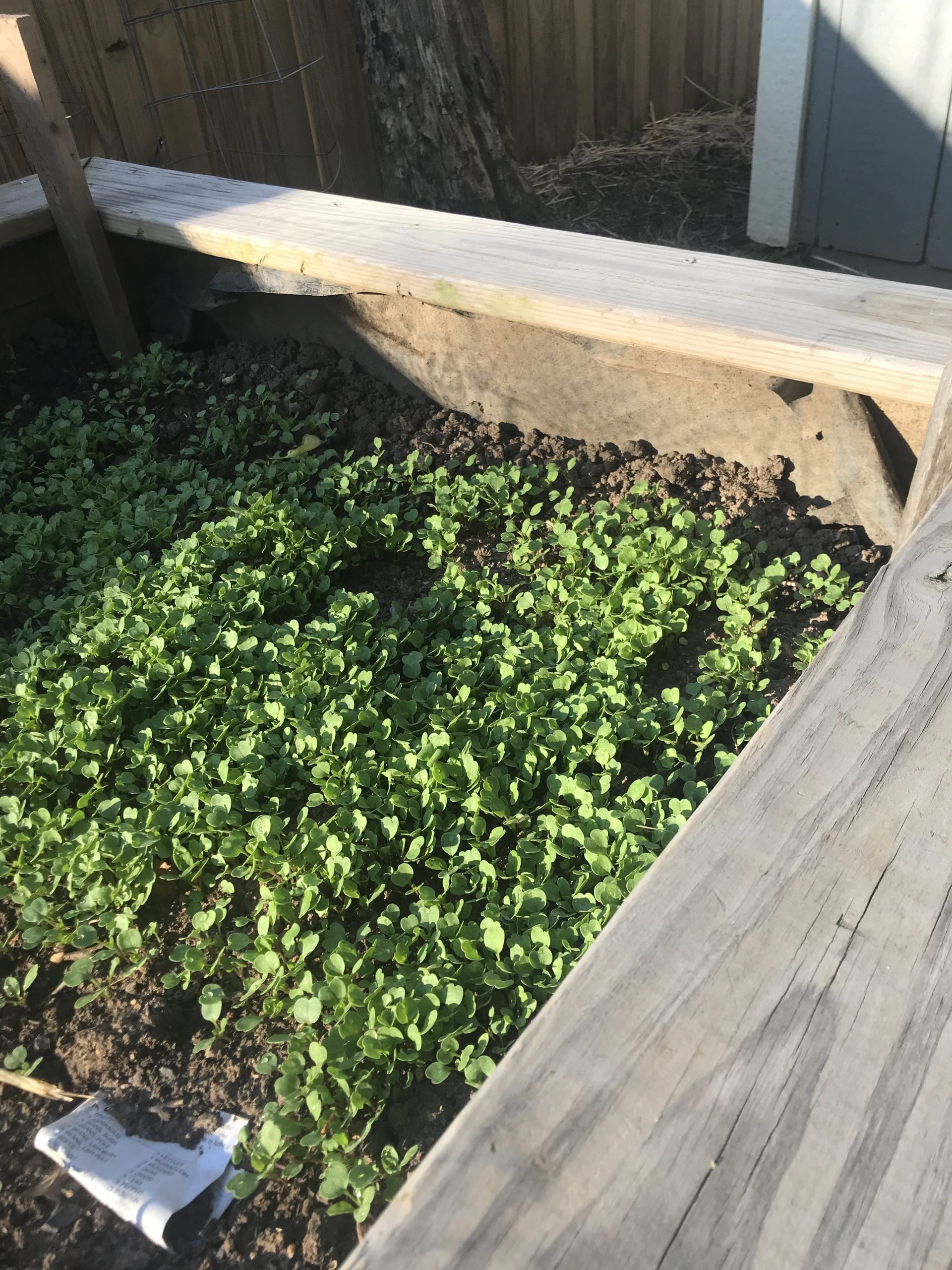
Each week, one of the things mentioned in the prayers at my church is an appeal to God to help us be good stewards of his creation. This always really speaks to me.
I grew up in an agricultural community and to this day continue to learn from my mother best practices for vegetable gardening and composting. In raised beds in our back yard in McLean, lettuce and spinach seeds are just starting to emerge as tender green leaves!
Whether you garden or not, this is such a beautiful time of year to get out of doors, experience the rebirth of nature and celebrate Earth Day!
Here are a couple of links for Earth Day activities in Fairfax County:
https://www.fairfaxcounty.gov/parks/green-spring/earth-day/042322
https://www.fxva.com/blog/post/earth-day/
This blog post is the expressed opinion of its writer and does not necessarily reflect the views of Tysons Interfaith or its members.
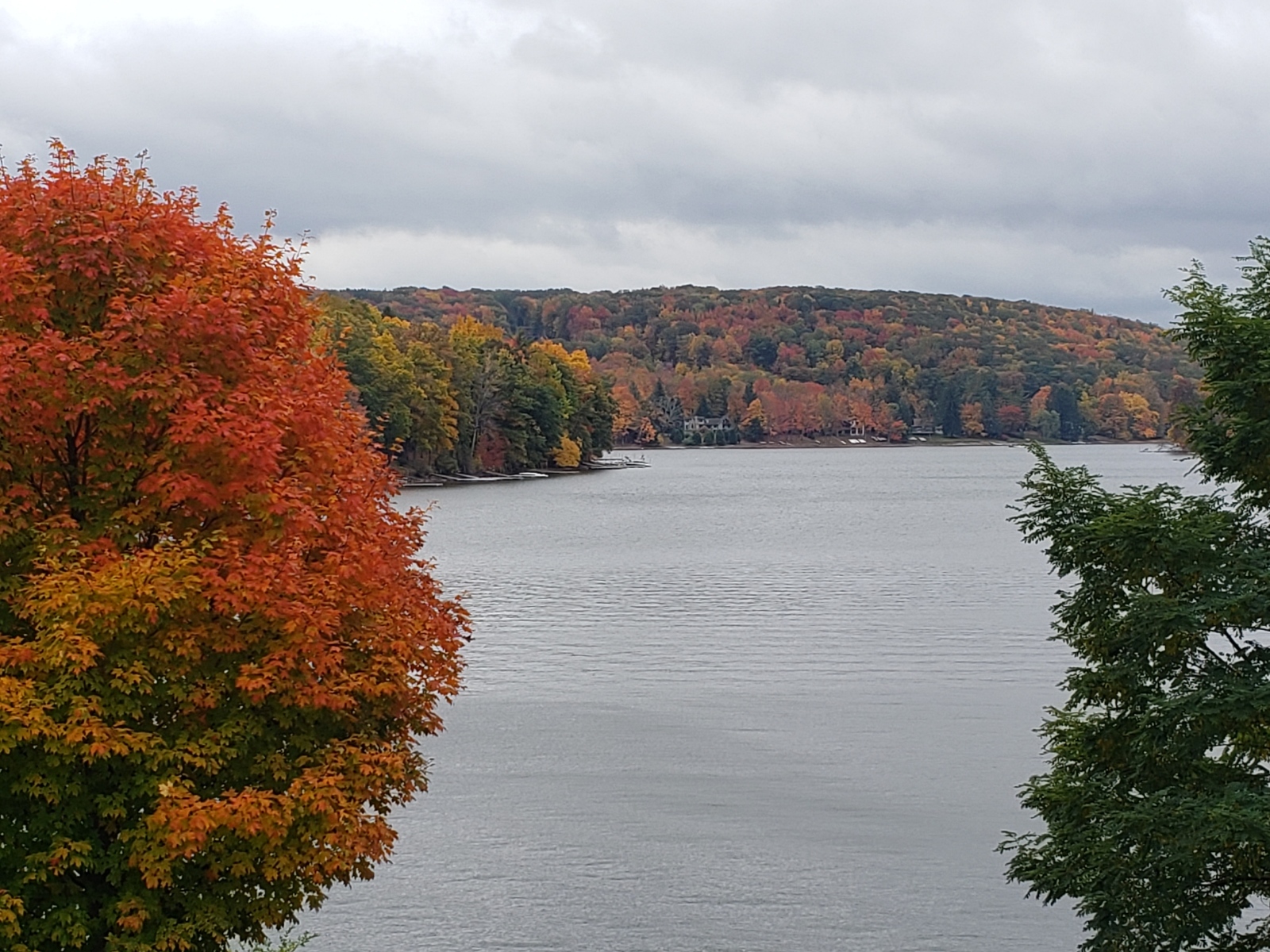
On a recent October Sunday, the Reverend Fran Gardner-Smith and people of St. Thomas Episcopal celebrated the Feast Day of Saint Francis of Assisi with an outdoor service attended by about 50 people and 11 dogs! Following this service, Rev Gardner-Smith shared the following communication with her congregation:
“Francis is known for his love of all creatures and for creation. At our outdoor service, we heard this reading from one of Francis’ sermons entitled “Peace, birds, peace!”:
‘My brother and sister birds, you should greatly praise your Creator and love him always. He gave you feathers to wear, and wings to fly, and whatever you need. God made you noble among his creatures and gave you a home in the purity of the air, so that, though you do not sow nor reap, he nevertheless protects and governs you without your least care.’
At the service, our choir sang one of my favorite choral pieces, “For the Beauty of the Earth” arranged by the English composer John Rutter. You can hear youth from the Milwaukee Vocal Arts Academy singing it here.
I hope you can find a small way to honor St. Francis today. Take a walk outside. Admire some leaves that are beginning to turn color as we move into October. Snuggle with an animal who shares your home. Whatever your day holds, may you find beauty. “
On that same October Sunday, across town at Redeemer Lutheran, Pastor Sandy Kessinger delivered a sermon also reflecting on this beautiful time of the year and on Psalm 8 that is excerpted here:
“O Lord, our Sovereign, how majestic is your name in all the earth! When I look at your heavens, the work of your fingers, the moon and the stars that you have established; what are human beings that you are mindful of them, mortals that you care for them?”
On this important topic Pastor Kessinger had this to say (summarized from her sermon, full text can be found here.):
“Who are we that God is so mindful of us? A better question is – Do we value ourselves as much as God values us? How quick we are to look at our faults and not see our gifts.
We need to look up at the heavens and the sky, the moon and the stars, the mountains, and the oceans, and place ourselves among the manifestation of God’s glory. God orders all things and gives us infinite value and worth in spite of ourselves.
Who are we? We are children of God, a little lower than the angels, and crowned with glory and honor. And in his infinite wisdom God also gave us partners so that we do not need to go it alone. May we live into what God intended for us when God created us in his image.”
As the trees begin to turn, I will reflect on Rev. Gardner-Smith and Pastor Kessinger’s messages. I will give thanks for the beauty of the earth, my sometimes silly and beloved animal companions, and the wonderful friends I have made through Tysons Interfaith – all members of the same human family, valued and partners in spiritual living.
.
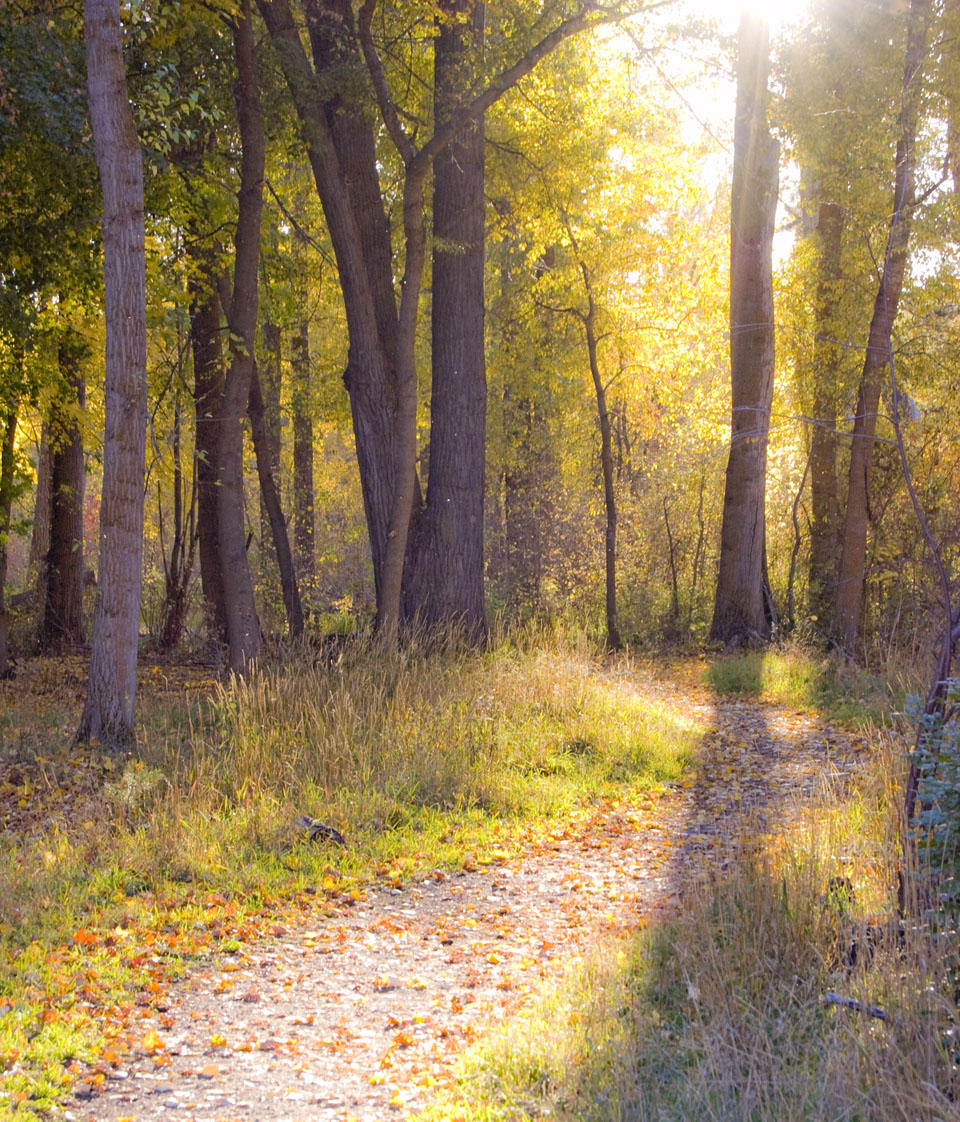
I’m finding that the transition out of COVID is stressful for me. And if conversations I’ve had are any indication, the transition is stressful and for many of us. We are in that funny time where we are working toward freedom (our Reston family had our first meal together in an actual restaurant last night!) but we aren’t all the way there yet.
One word for times of transition is liminal, which means occupying a position at, or on both sides of, a boundary or threshold. Liminal times can be exciting, but they can also be stressful. Figuring out what life looks like as we cross a boundary can be invigorating. It can also be exhausting. I was thinking about this particular liminal time when I read a reflection written by one of the Assisting Bishops in the Episcopal Diocese of Virginia, Bishop Porter Taylor. He shared this poem by Wendell Berry called “The Peace of Wild Things.”
When despair for the world grows in me
and I wake in the night at the least sound
in fear of what my life and my children’s lives may be,
I go and lie down where the wood drake
rests in his beauty on the water, and the great heron feeds.
I come into the peace of wild things
who do not tax their lives with forethought
of grief. I come into the presence of still water.
And I feel above me the day-blind stars
waiting with their light. For a time
I rest in the grace of the world, and am free.
In this liminal time, I find that I am needing the peace of wild things. I need time surrounded by nature. I need quiet and rest. And I certainly need to remind myself not to be taxed with the forethought of grief and anxiety.
I hope that you are able to find times and spaces for refreshment, whatever that looks like for you. Can you take a walk in nature? Can you watch the birds from a chair on your porch? Does your dog, your cat, or your gerbil make you smile? Where can you rest in the grace of the world and be free?
This blog post is the expressed opinion of its writer and does not necessarily reflect the views of Tysons Interfaith or its members.
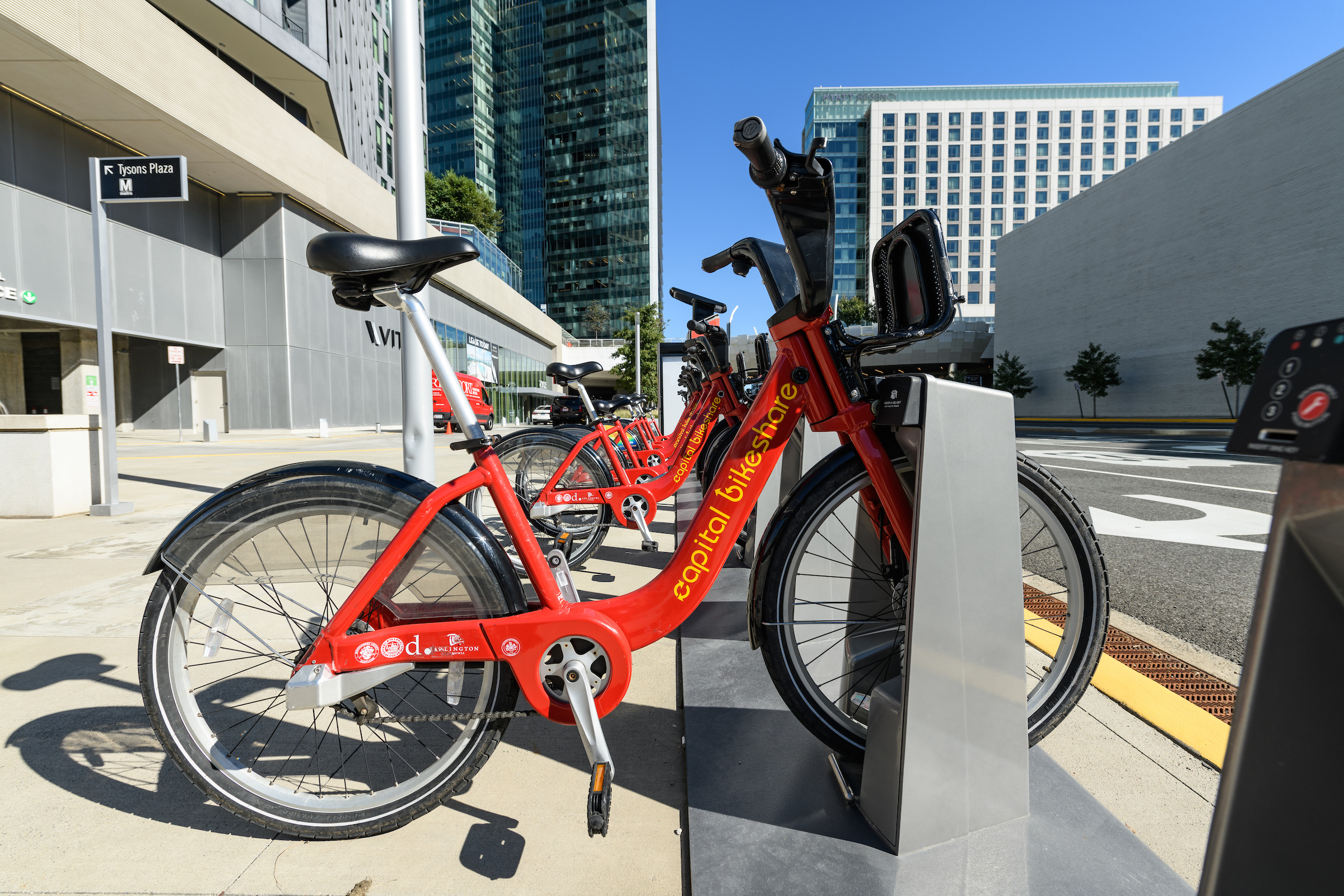
As I wrote in an earlier post, Tysons can be a good if not great place for biking and hiking. But when Fairfax County shuts down one northbound lane of Tysons Boulevard to vehicular traffic beginning on July 6, you must at least try one time for yourself. Capital Bike Share station map
The Bike Share bikes are heavy, so if you procure one, you will go slow, not such a bad thing even in these pandemic times. Tysons Boulevard is not as busy as International Drive but believe me it can get a bit of traffic. So, closing it off to allow pedestrians and cyclists is a good tradition to have.
Let me remind you that in addition to access to Tysons Galleria, you can easily access one of the few trails in Tysons. Even before you enter the closed portion of the street, take a right down West Branch and then enter the trail on your left. It will take you to the (artificial turf) soccer field.
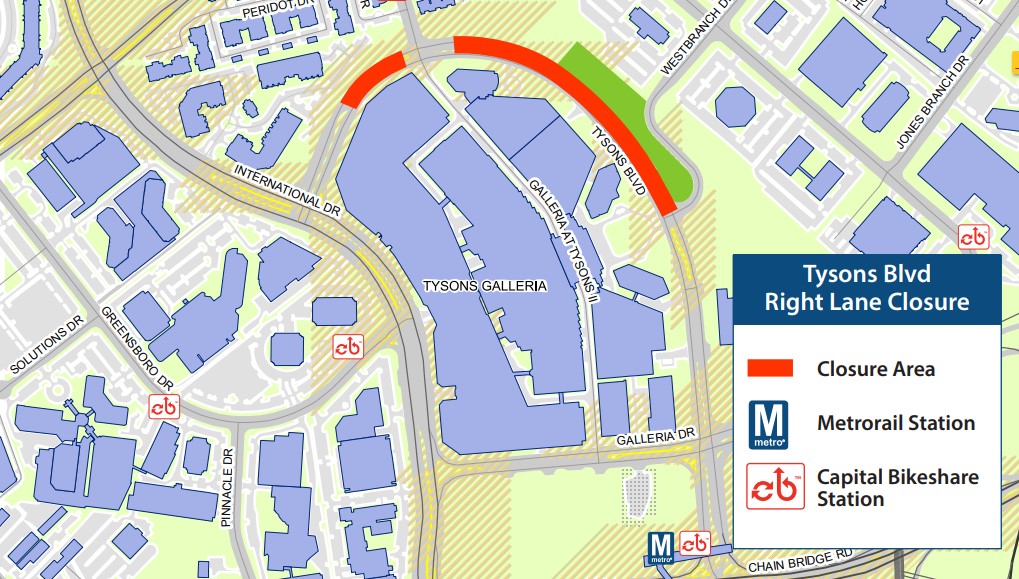
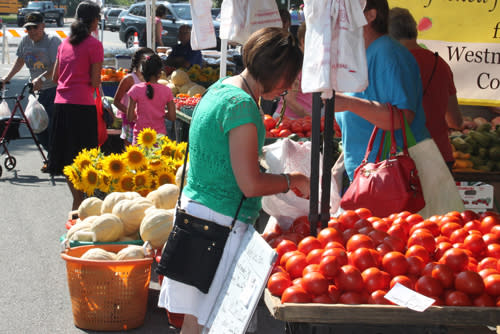
As delicious local summer and fall produce reaches its peak, you might want to check out the bounty that can be found at our local farmers’ markets. These markets offer a wide variety of locally grown and produced fruits and vegetables, flowers, dairy products, baked goods – even soaps, jams and pickles! Wear your walking shoes and bring a basket or shopping bag, because you never know what treasures you might find as you support our local farmers and businesses.
- The FRESHFARM Farmers Market at the Boro is located in the heart of Tysons in the new Boro residential and shopping district off of Route 7. You can find it behind the Loft Building at 8399 Westpark Drive on Thursdays from 3:00 pm to 7:00 pm through October 28th. Read more here.
- The Falls Church Farmers Market To Go is open every Saturday from 8:00 am to Noon. It is located at 300 Park Avenue, Falls Church. Additional information can be found here.
- The McLean Farmers Market is open every Friday through November 12 from 8:00 am to Noon. It is located at 1659 Chain Bridge Road, McLean. Additional information can be found here.
- The Vienna Farmers Market, sponsored by the Optimist Club of Greater Vienna, is open Saturday mornings through October 30. It is located at the Vienna Community Center, 120 Cherry Street, SE, Vienna. Additional information can be found here.
- The NOVA Central Farm Market is open year round on Sundays. April through December hours are 8:30 am to 1:00 pm. It is located at the Church of the Holy Comforter, 543 Beulah Road, Vienna. (The Church of the Holy Comforter is a member of Tysons Interfaith.) Additional information can be found here.
- The FRESHFARM Farmers Market Mosaic is open Sundays through December 26, 9:00 am to 2:00 pm. It is located at 2910 District Avenue, Fairfax. Additional information can be found here.
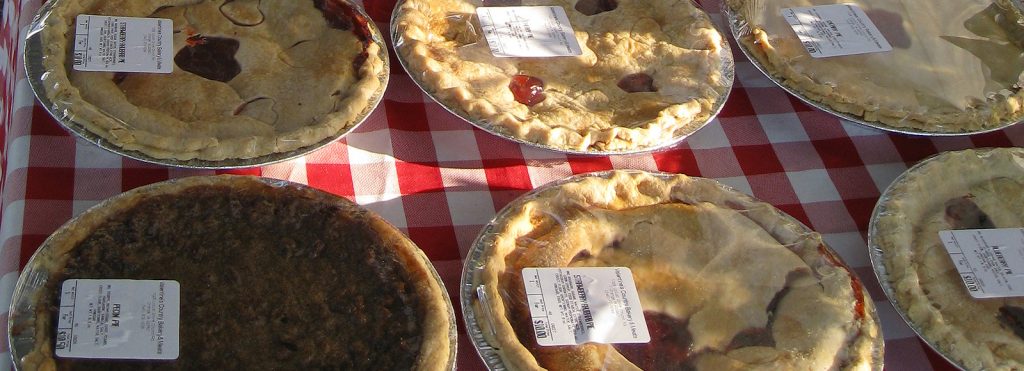
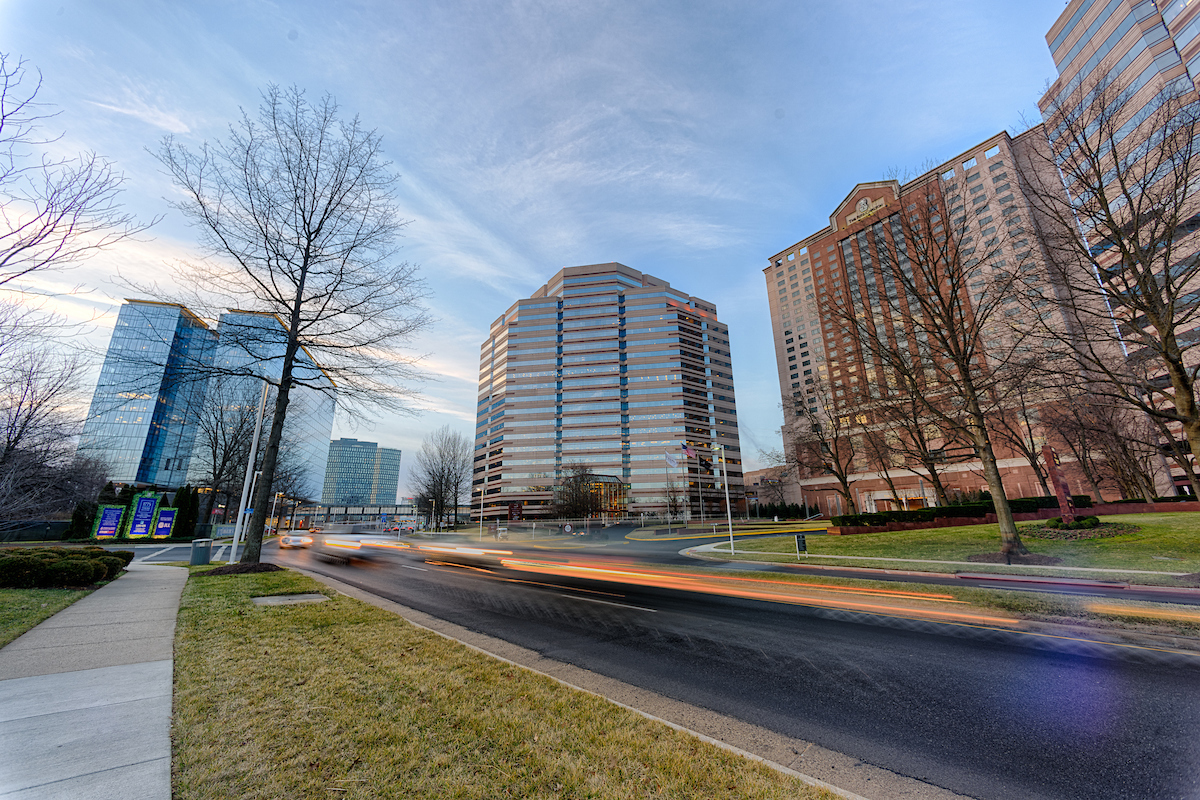
This past month, Peter Bartholomew, an old acquaintance of mine from my Peace Corps Korea days passed away suddenly. Peter was no ordinary guy, as the attached obituary by Andrew Salmon attests: Asia Times: Guardian of Korean Heritage Passes. It’s long, but very juicy and worth reading, particularly the passage about fights between developers and preservationists. “Developers cleared Seoul’s higgledy-piggledy little alleys and tiny hanok to make way for the steel-and-glass commercial towers and soulless apartment complexes that dominate today’s city.” In a tribute to Peter, one Korean-language paper used this as the headline: “An American who loved Korea more than Koreans.” What a legacy.
We don’t have the same issues that Peter gleefully fought in Seoul, but there are some in my neighborhood who resist the “infill” taking place and the plan to turn McLean into a “mini Tysons.” They don’t want to change the “soul” of the neighborhood. Similarly, I know many are hoping that Tysons, as it develops over the next thirty years, will be purposeful in preserving natural settings and developing physically pleasing and connecting spaces for the humans who will live and work there.
I share with you this image of McLean Central Park where I walked our grand dog just the other day. Off the main path I found this amazing shrine placed there apparently by a group of teenagers.
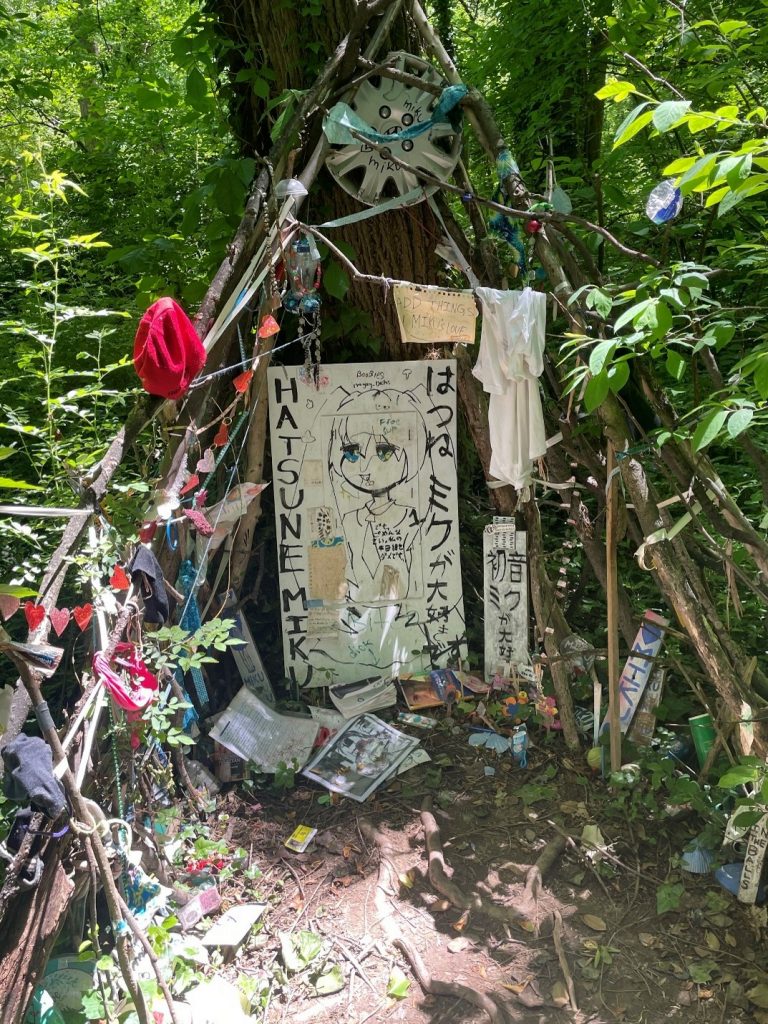
I’m of two minds about the park improvement project, which among other things will bring us an amphitheater to compete with other venues in Tysons. I like the woods just the way they are. And wouldn’t it be nice if there were someplace in Tysons where kids could do something other than play soccer on artificial turf, maybe putting up a shrine like this, even if it’s to an anime character?
